Did you know beekeepers have generally been proven to have a longer lifespan than most other professions? Beekeepers are listed as the top of all longevity professions based on facts. Wonder why? Believe it or not this is due to a lifetime of Apitherapy. Most people associate bees with honey or pollen, but there is another bee product, bee venom, that has long been used to treat certain illnesses. This ancient medicine falls under the category of Apitherapy which is defined as; the use of products derived from bees as medicine, including venom, honey, pollen, and royal jelly.
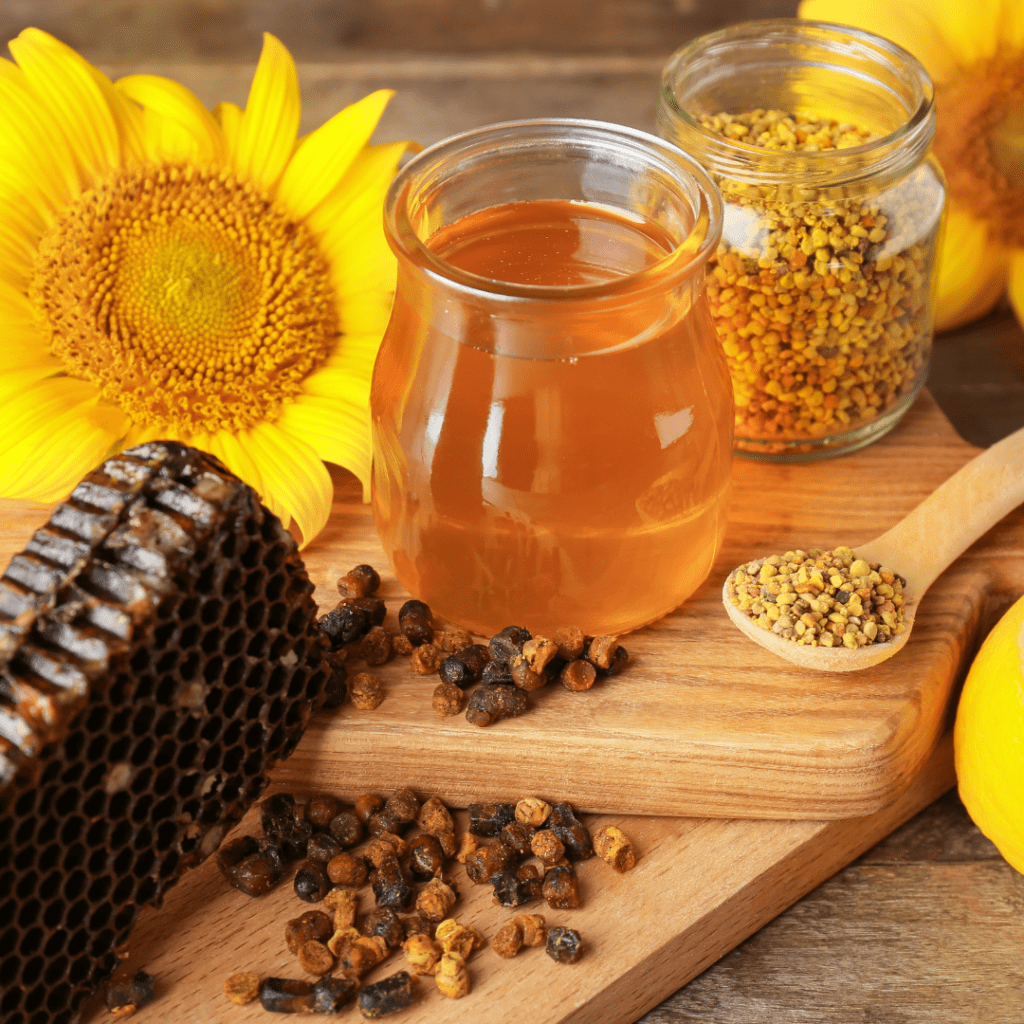
The first documented use of bee venom as a medicine dates back more than 6000 years, to ancient Egypt. Not long after, it became popular throughout Asia and eventually reaching the Greek and Romans. Hippocrates documented his use of bee venom to treat joint pain and arthritis.
Many people may cringe at the thought of receiving a bee sting, especially the thought of receiving one on purpose. I don’t think anyone enjoys being stug, however sometimes, the benefits outweigh the downside.
How Does BVT Work?
The primary purpose of BVT is to stimulate the body’s immune system so that it can begin to heal itself. Once the stinger is imbedded in the skin, it pumps venom into the sting site. In reaction to the foreign substance entering its system, the body sends large amounts of blood to the area. This concentrates the healing properties within the blood around the sting site.
When a bee stinger is activated, it releases more than just venom. An estimated 18 to 20 naturally occuring antibiotics and antivirals can be found in the ensuing concoction, along with anti-inflammatory and pain reduction substances. Bee stings can also trigger reactions in the human body that generate healing properties that would otherwise remain dormant, thus, why the sudden immune response is so strong. Because of bee venom’s effect on the immune system, it has been used to help treat many autoimmune disorders, most notably Lyme.
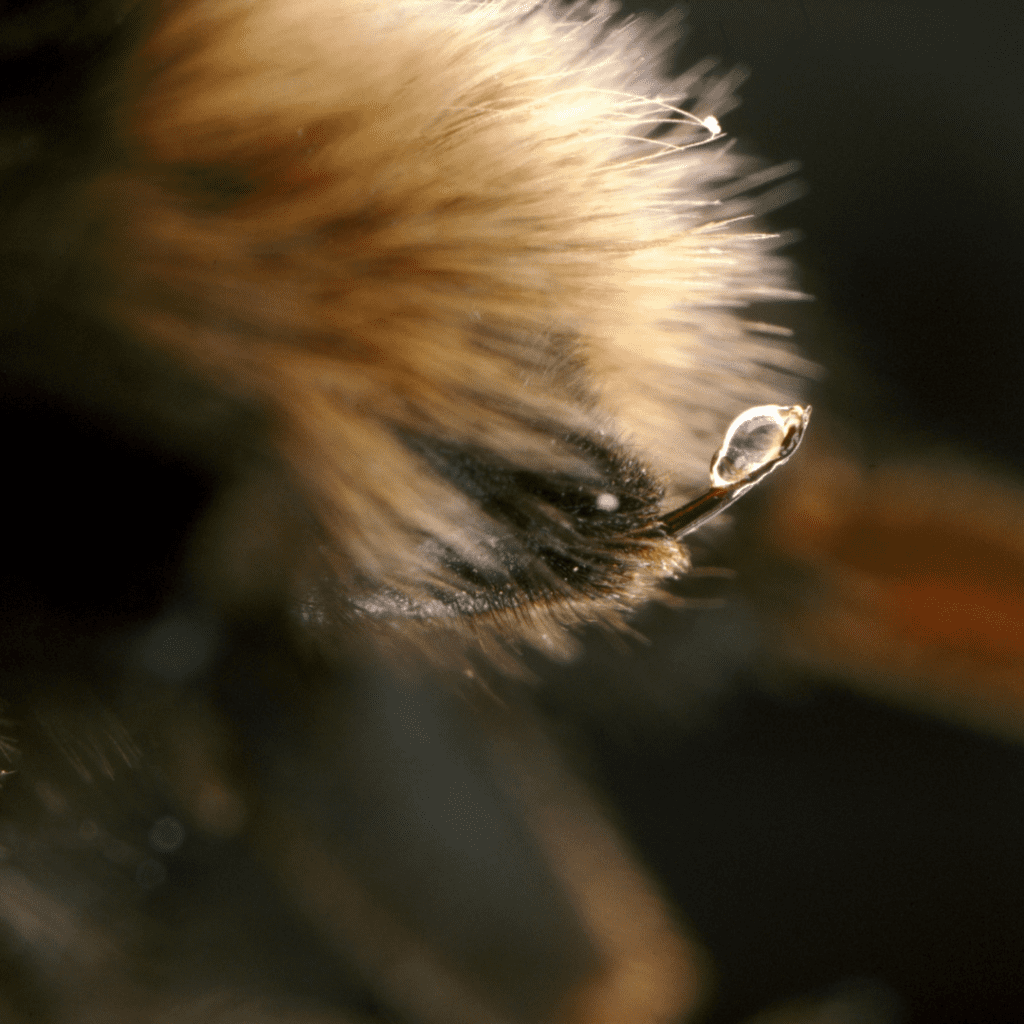
There is also significant research indicating the BVT may help in cases of malignant melanoma, basil cell carcinoma, lymphoma, breast and prostate cancer, but BVT also has the potential to help reduce negative reactions to chemotherapy.
BVT has been associated with increasing fertility in sterile women, but has also increased risk for miscarriage in newly pregnant women. Conditions that have been successfully treated with bee venom include; multiple sclerosis, post herpetic neuralgia (shingles), chronic pain syndromes, eczema, psoriasis, sclerosis, corns, warts (including planters warts), Epstein Barr virus (EBV), Lyme Disease, mononucleosis, premenstrual syndrome, menstrual cramps, irregular periods, mood swings, depression, and hypoglycemia.

Conditions BVT Is Said To Treat
• Arthritis
• Rheumatism
• Back pain
• Skin diseases
• Multiple sclerosis
• Lyme disease
• Chronic fatigue syndrome
• AIDS
• Chronic Fatigue syndrome
• Epstein Barr Disease
• Mononucleosis
• Shingles
• Warts
• Viral Meningitis
• Asthma
• Chronic Obstructive Pulmonary Disease and Emphysema
How often do you have to sting yourself?
Unfortunately bee venom therapy is not a one and done type of treatment. It requires routine stings on a weekly basis, usually three days a week. Most people prefer to do their treatments Monday, Wednesday and Friday so that they can enjoy a sting free weekend. The reason for the consistency is to keep the immune system stimulated, which also depends on what disorder your trying to treat.
Do I have to do it forever?
This is not an easy answer because it really depends on what you are using this therapy for. Someone for instance with arthritis or multiple sclerosis may use this therapy throughout their lifetime to help control symptoms, as where someone with Lyme disease may only have to do it for a year or two before Lyme test run negative.
Many of these factors are also based off the severity of these conditions. Some people have been able to treat their ailments in less than 6 months, as where others it may take three years. It all just depends on how your body responds to the treatment.

Do I have to go somewhere to receive treatment?
No. Because BVT involves treatment three days a week, it would be almost impossible for someone to visit a facility that often. Once you have the supplies needed and gain education on how to safely administer, bee venom treatment is done in the privacy of your own home.
Do I have to own bees?
No. Most people that participate in bee venom therapy simply purchase bees from their local beekeeper. Most bees can live about a week in a Mason jar provided they have honey covered by a paper towel (This prevents the bees from drowning in the honey). You can also purchase portable bee boxes that will house more bees, enough to last several weeks. Another option of course is to become an actual beekeeper!

Is there a special diet?
YES! The bodies adrenal glands are stimulated by venom to release cortisol. Cortisol is the natural version of the steroid, Cortisone that is commonly used by physicians to treat arthritis and other cases of inflammation. While it is close, Cortisone is chemically not exactly the same as the Cortisol that the body produces and over time patients can develop liver toxicity from Cortisone treatment. It is believed that the body requires various B vitamins and vitamin C in order to produce Cortisol. It is recommended for best results, if obtaining bee stings for therapeutic reasons take 1,000 to 2,000 milligrams of vitamin C and a tablet containing multiple B vitamins about one hour prior to receiving BVT.
While taking bee venom treatment it is recommended to Do Not Eat or Drink:
• White foods (white bread, white rice, white sugar)
• Foods and drinks containing artificial sweeteners
• Dairy products (milk, cheese, cottage cheese, sour cream, etc.)
• Alcohol, coffee, strong tea, cigarettes, tobacco
• Chocolate, cacao
• Oily, greasy foods, junk foods (french fries, fast food products, etc.)
Recommended Daily Dose of Vitamin Supplements
• Vitamin C: 2000-3000 mg (Recommended brand: Chewable Vitamin C, 250 mg or 500 mg/tablet)
• Vitamin B5: 100-500 mg
• Magnesium: 200-800 mg;
Food, Drinks and Products to Avoid
• Foods and drinks containing Lactic acid (yogurt, apples, tomato juice, etc.)
• Products prepared from or containing strong aromatic oils or made with menthol, peppermint, eucalyptus, camphor (such as toothpaste, creams, candies, etc.)
• Products containing sweet oils (such as Sweet Balm, Sweet Bark, Sweet Chamomile, Sweet Chervil, Sweet Clover, etc.);Ginseng, parsnips, red onion
• Pops, carbonated drinks (Coca Cola, Pepsi Cola, Carbonated mineral water, etc.)
Recommended Foods and Life-Style:
• Whole food sources: vegetables, leafy green vegetables, fruits, dried foods, poultry, liver, fish, cod liver oil, egg, nuts and seeds, butter, whole grains, etc
• Daily, eight to ten (8-10) cups of distilled/purified drinking water
• Daily, stay at least 2 hours in fresh air and exercise

What supplies do I need to begin?
• Apitherapy Self-Closing Tweezers or Eight to 12-inch forceps
• Mason jar
• A few bees
• EpiPen in case of an emergency
• Benadryl
• Ice or ice-pack
Time to begin
Preparing the bees: Once the bees are collected, it is best to store them in a dark, quiet place for a while. If necessary, I wrap a dark cloth around the jar to prevent the bees from racing around and around the jar using up their life energy trying to get to the light they see through the glass. This also encourages the bees to quiet down and cluster making them much easier to grab them when the time comes to remove them.
If the bees are to be used for BVT shortly after they have been collected and they are acting energetically, the container can be placed in the refrigerator for a few minutes. The cold greatly decreases the activity level of the bees making them much easier to catch. Care must be taken not to leave the bees in the cold too long or they will enter a state of torpor where they allow their body temperature to get very low in order to conserve energy. Bees in the torpor state will not readily sting when prompted and must be warmed back up before being used for BVT.
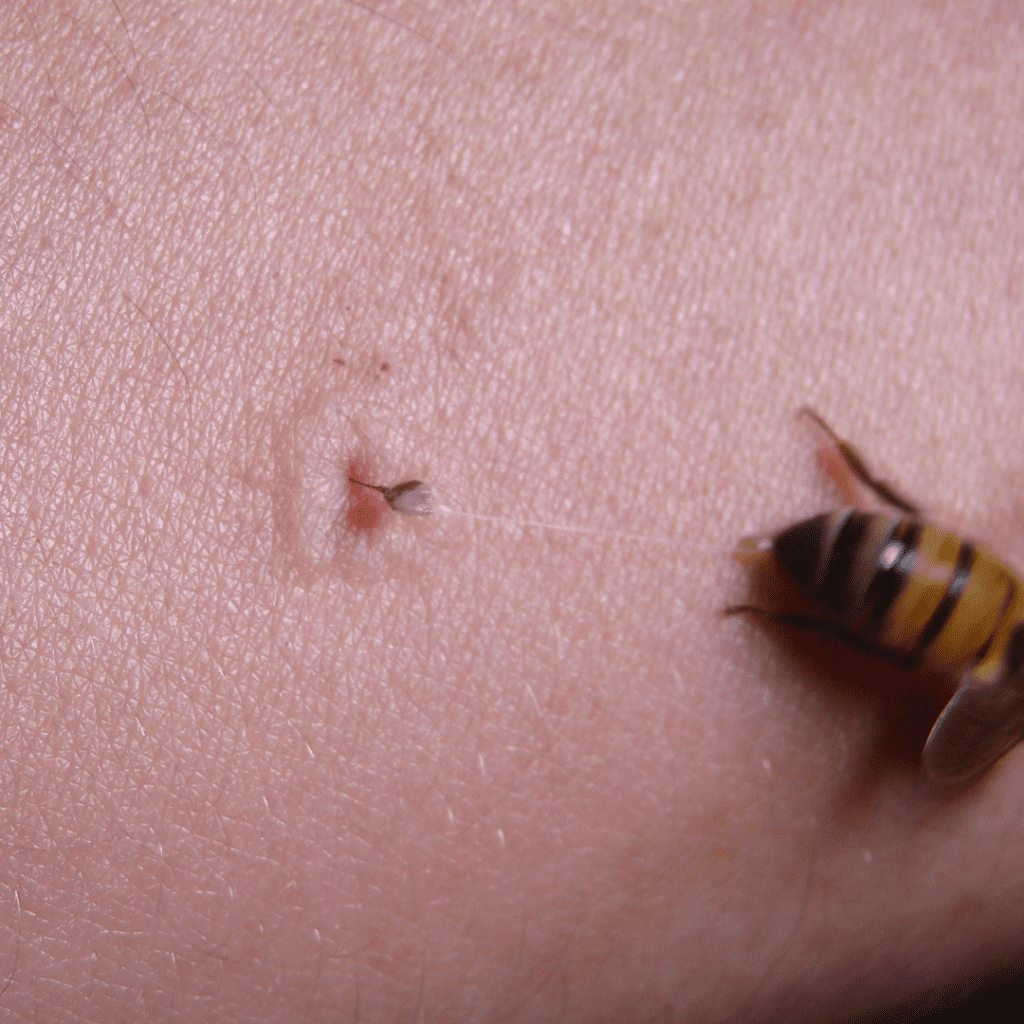
Choosing A Site
A technique for choosing a sting site is by pressing firmly along joints and bones looking for spots that are sensitive and painful when pressed. These are called hot spots and it is recommended to mark this area with a pen or marker whenever they are discovered. This provides a bullseye target for the actual sting. Interestingly, these hot spots often coincide with the bodys meridians the places that acupuncturists insert their needles. Stings applied to these meridian points give greater results than when applied in other areas. Some even hypothesize that the honey bee was the first acupuncture needle ever used.
Appling The Sting
To help reduce the initial pain of the sting, ice or ice-pack wrapped in a towel is applied to the ink mark area. The ice is applied for a minute or two in order to numb the sting site and help reduce the initial pain associated with the sting.
Once the area is numbed, a bee is removed from the jar and the tip of the bees abdomen is applied to the ink mark. Eight to 12-inch forceps are the perfect tool for removing bees from the jar. It is important to try and grasp the bees by their head or thorax rather than the abdomen, since grabbing the bee by the abdomen may damage the stinging apparatus preventing the stinging mechanism from working.
After the initial sting, do not scrape out the stinger. This is extremely important. Leave the stinger in place for 10 minutes allowing all the venom to be pumped into the system.
If a person is new to staring this therapy or has not received a bee sting within the past two weeks, it is prudent to try a test sting before applying full stings to be sure they have not become hyper-allergic. To apply a test sting simply scratch out the honey bee stinger within a split second after it has become imbedded in the skin. Then wait for 15-20 minutes and monitor the patient. If they do not experience symptoms associated with anaphylaxis, such as fainting, loss of blood pressure, and breaking out in hives all over the body, then BVT can proceed with full strength stings.
About 5 to 7.5% of all people could develop allergies to bee stings so it’s vital to not skip this step.

How many stings?
Start with one. See how your body reacts. Up the amount by one sting each time until you reach your personal resistance. Most people don’t go above 10-15 stings at max throughout their entire treatment. You will start to feel what is enough for your system. But initially this should be preformed three times a week.
If you are treating a disorder such as arthritis, you may start three times a week but back that down to once or twice a week as a pain management.
Safety Considerations
As with any treatment, there are side effects that can be expected from BVT treatment. While not everyone will experience all of the possible side effects, the most common side effects include the initial pain of the sting, as well as swelling, redness, itching, soreness and tenderness, feelings of heat in the treatment area, and in extreme cases nausea and fever. It is important to note that none of these localized reactions are typically life threatening. A life threatening anaphylaxis reaction will affect the entire body. The public’s usual response to a sting reaction is to take an antihistamine.
Liquid antihistamines sold for children will be absorbed by the body the quickest providing the fastest relief. A more powerful antihistamine is sold under the brand name, Zyrtec, and used to only be available by prescription but now can be purchased over-the-counter.
The problem with taking antihistamines for uncomfortable reactions to BVT is that they suppress the body’s immune system. Since BVT is practiced in order to stimulate the body’s immune response, drugs that depress the body’s immune system are contraindicated. It is preferable therefore to use the homeopathic remedy, Apis Mellifica, should theside effects of BVT become too uncomfortable, since the remedy can reduce symptoms without suppressing the immune system. Similarly, one should avoid the use of alcohol during bee venom therapy, since alcohol also suppresses the body’s immune system.
Although it is extremely rare, about one percent of the population is hyper-allergic to honey bee venom and will experience anaphylaxis. For this reason, it is prudent to always have an epinephrine injector (brand name: EpiPen) on hand when giving or receiving BVT and always apply a test sting first if the person has not been stung within the past two weeks.
If you are allergic to bees, DO NOT attempt this treatment whatsoever
You must NOT use bee venom under any of these conditions
• Bee venom allergy
• Cardiac insufficiency
• Kidney insufficiency
• Pulmonary insufficiency
• Infections, local and systemic
• Feverish Diseases
• Purulent infections
• Pregnancy
• Unwillingness
Bee venom can be used, but with great care only:
• Diabetes (insulin dependant)
• Digestive ulcers
• Liver cirrhosis
• Use of beta – blockers (Epinephrine may not be efficient in case of anaphylactic reaction)
• Kidney insufficiency (glomerulo-nephritis, nephritis, polycystic kidneys, albuminuria)
• Lung Disease
• Turberculosis
• Severe psychiatric conditions (pyschosis, depression, anxiety)
• Immediately after a meal
• Nursing – during breast feeding
• Children Under 12
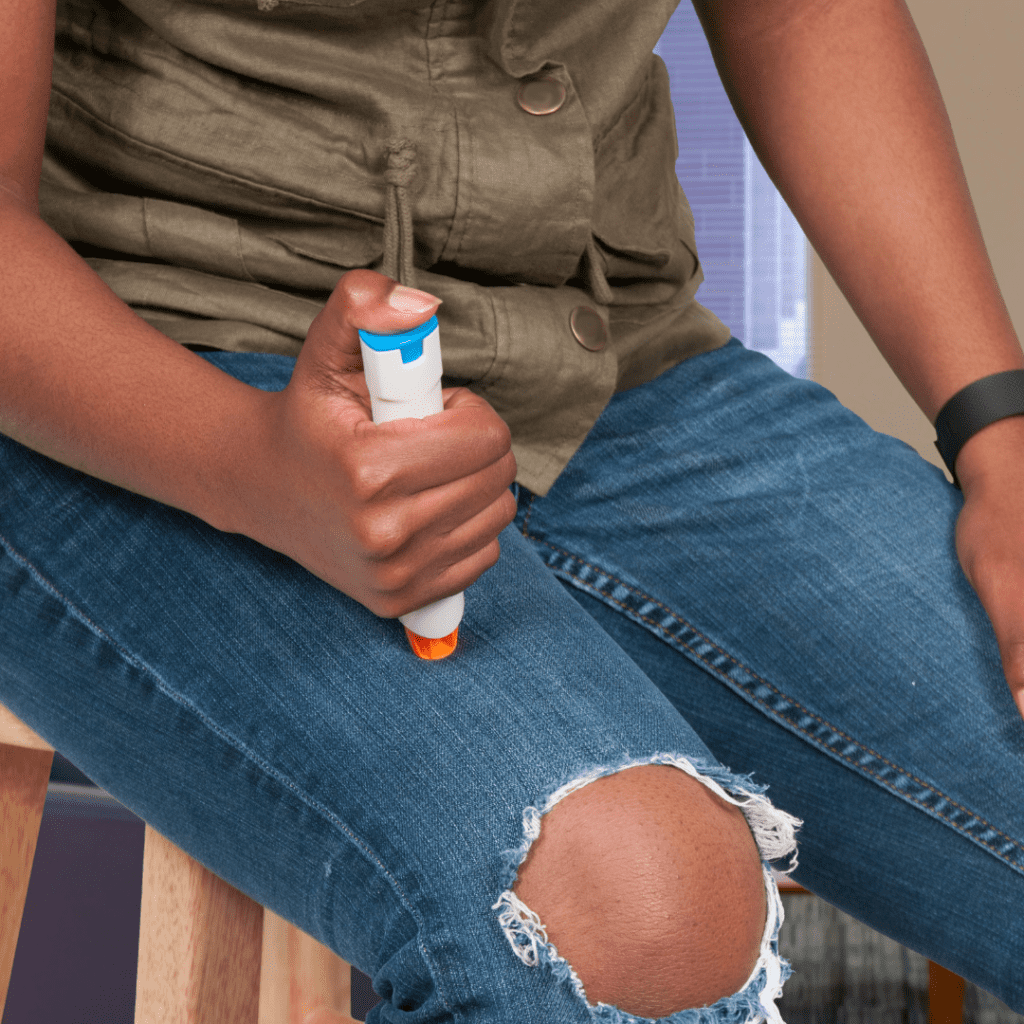
Making an informed decision
Consult your medical practitioner and discuss in detail all treatment options both conventional and holistic, and understand all available conventional and complimentary therapy options for your condition, their possible outcomes, limitations and side effects.
Research at your local library, online, and apitherapy research services for further information. Assess which options are consistent with your belief system and intuitive judgment.
Before considering bee venom as your choice ask yourself several questions:
• Are you willing to follow a non-drug approach, take supplements and vitamins, and follow the regimen needed for bee venom therapy to be successful?
• Are you prepared to make temporary and/or permanent lifestyle changes for this therapy?
Always do your own research and make an informative decision on what’s best for you and your own personal health. View our disclaimer here
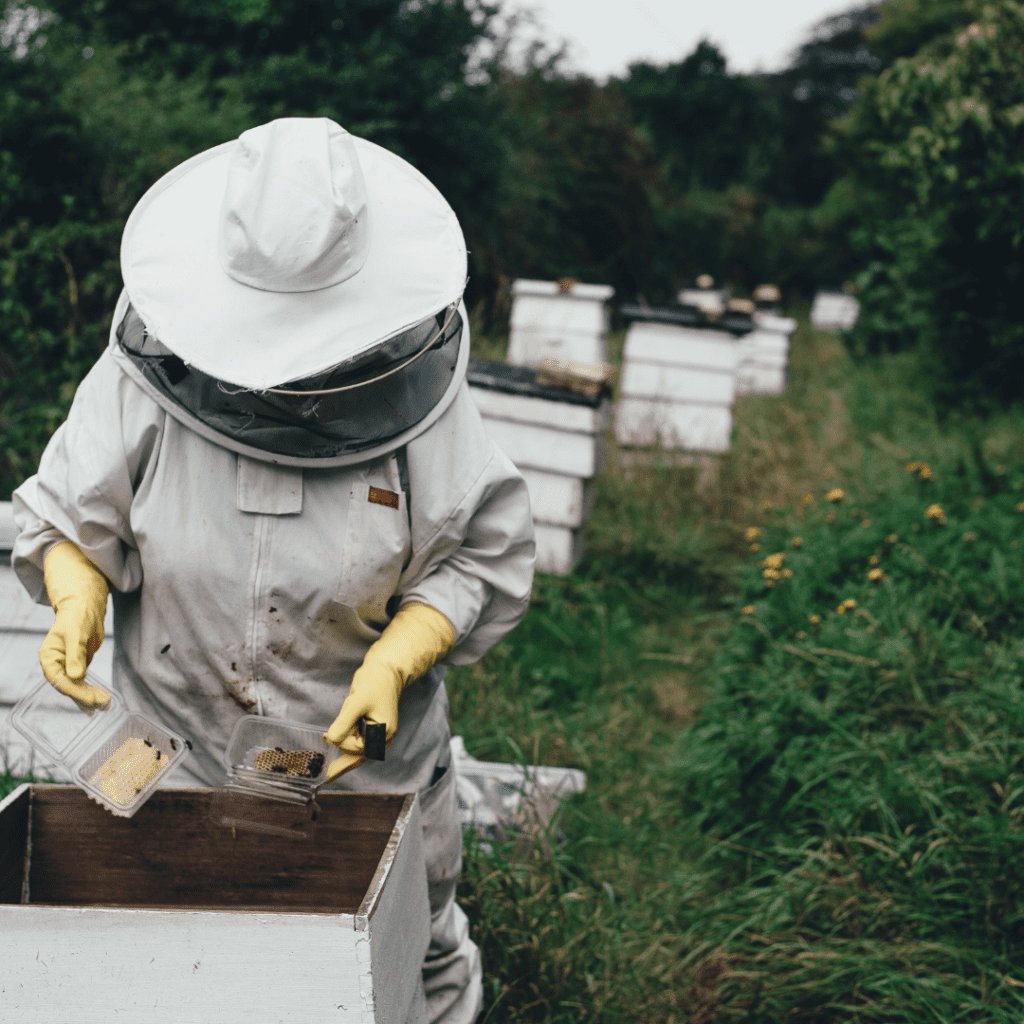
Final Thought
Before you undertake the first procedure, be sure you are completely informed and prepared. Bee venom therapy may be an alternative solution to prescription medicine, but it is still a medical practice and something that will effect your body, inside and out.
If you are interested in learning more about bee venom treatment and our Apitherapy services, send an inquiry email to kayce@healthprimitive.com
Stay Wild
Sources
https://www.longdom.org/proceedings/innovative-effects-of-bee-venom-therapy-on-lyme-disease-a-pioneering-study-52883.html
https://pubmed.ncbi.nlm.nih.gov/29654868/
Bee Sting Therapy: Health Benefits + Side Effects
Bee Venom Therapy
https://www.healthline.com/nutrition/bee-venom
https://mstrust.org.uk/a-z/bee-venom-therapy
https://www.frontiersin.org/articles/10.3389/fpubh.2020.594458/full
BEE VENOM THERAPY
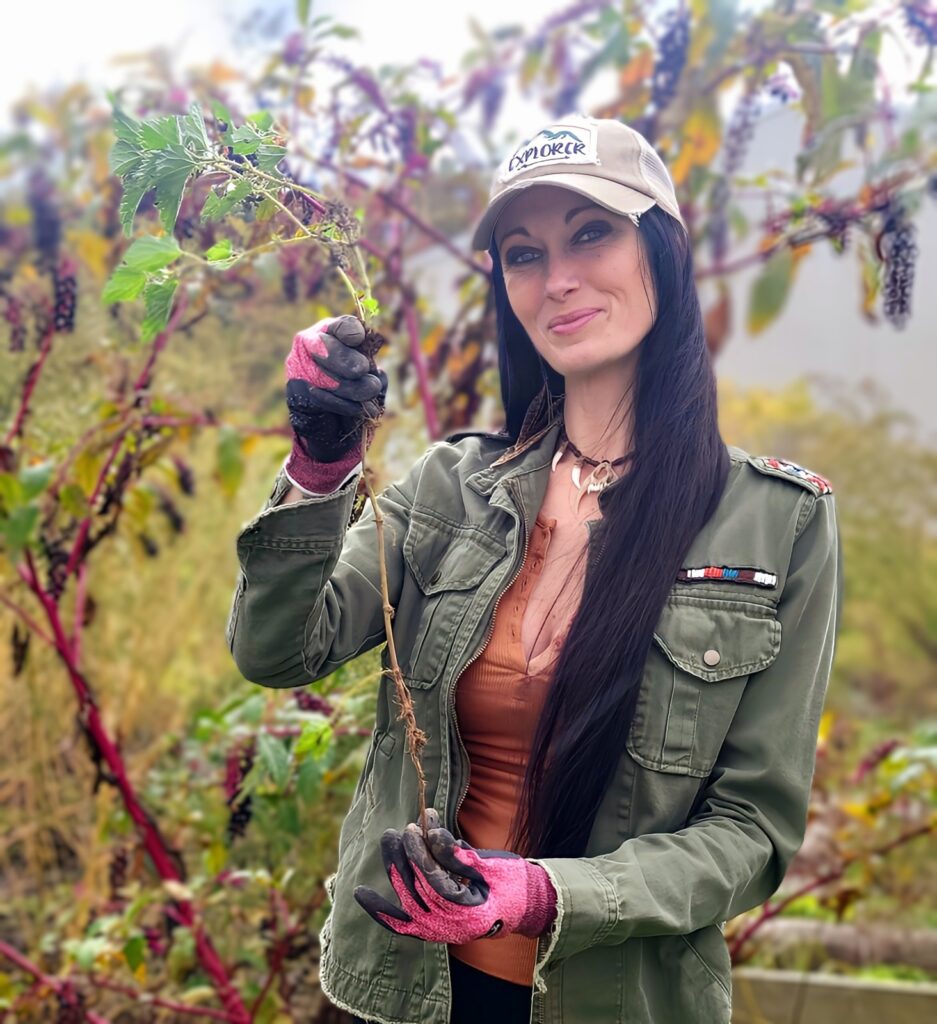
Kayce Heister
Kayce is a Clinical Herbalist, Naturopathic Practitioner (HHP), Active Forager, Wild Food Chef and Mother of three. She has spent the last 20 years practicing herbalism and natural health, and spends most of her time educating others on the amazing potential the natural world can offer.